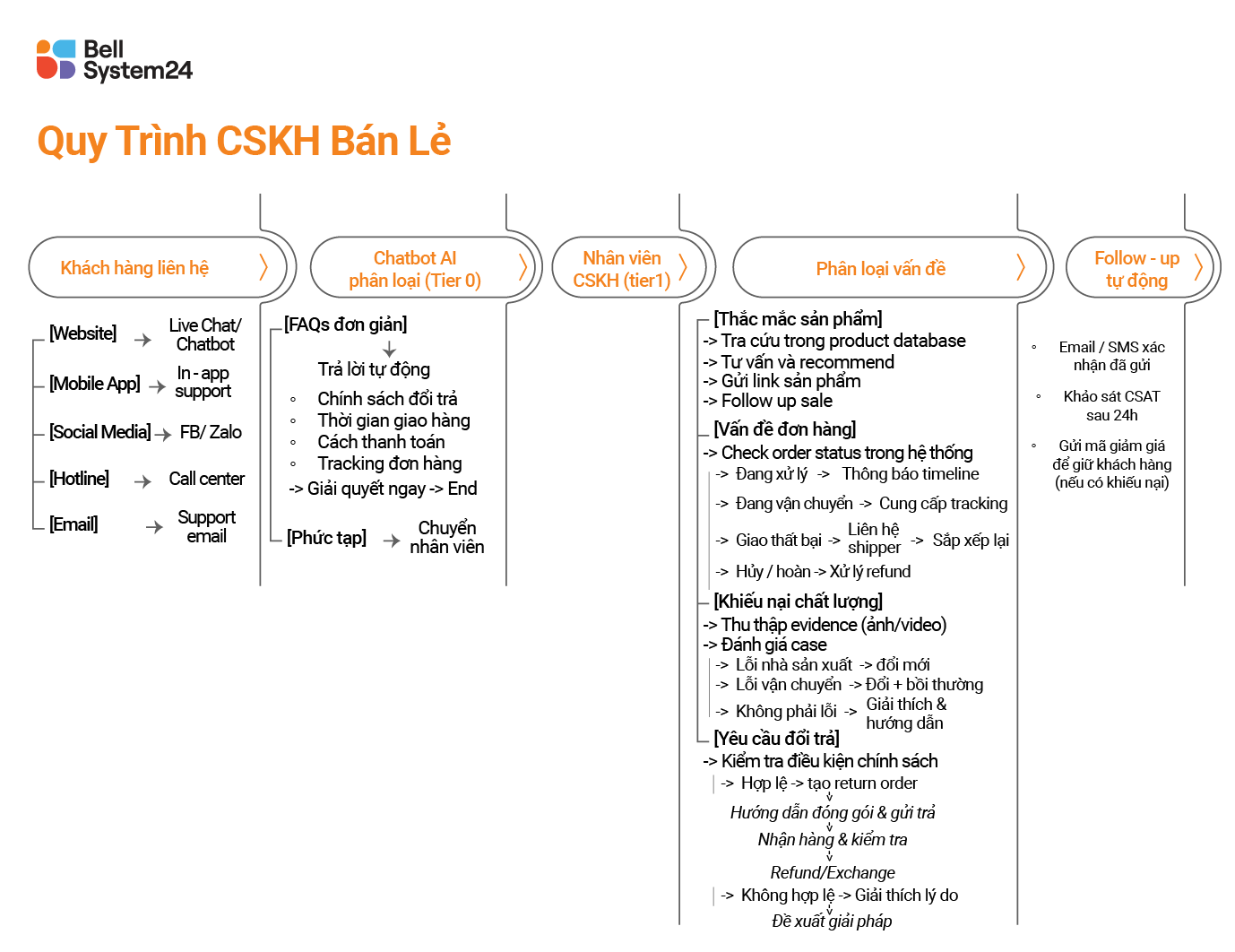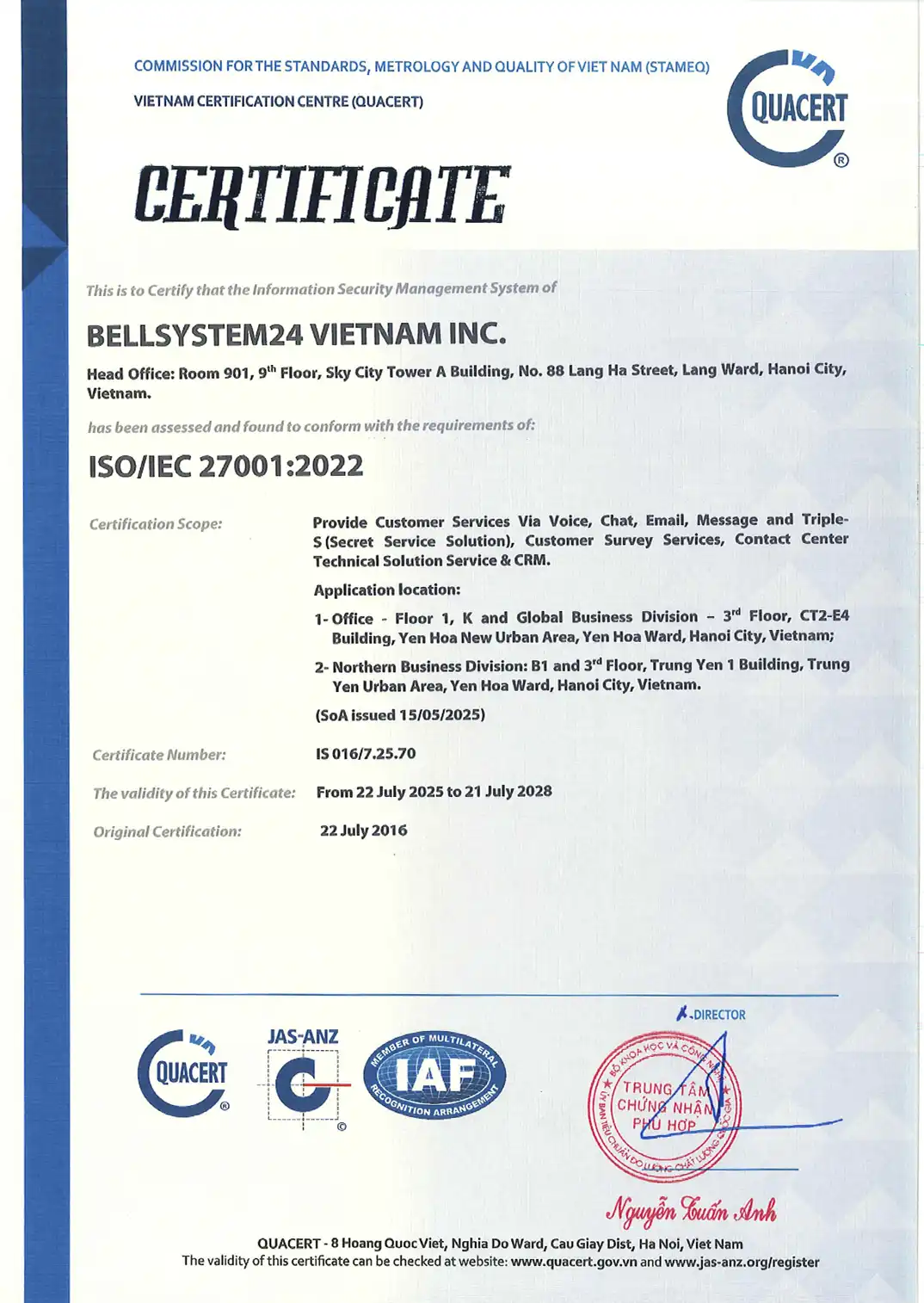We have the ability to speak, but how to speak well and correctly is not a simple thing. In today's era, effective communication plays an extremely important role in all life activities.
There are more and more forms of communication, in which indirect communication is becoming more popular than direct forms. Meeting each other in person to talk is much simpler than communicating through other channels such as Chat, Email, Phone,…In indirect communication, conveying a message, impressing or convincing the listener is a big challenge and requires regular practice to master.
In this article, Bellsystem24-Vietnam will point out the factors that influence successful communication and how to coordinate and control these factors to achieve effectiveness.

What is communication?
Communication is the process of exchanging information between a speaker and a listener, taking place with at least two people to convey a message to achieve a certain purpose. In communication there will be three purposes:
- Information exchange, psychological contact.
- Communicate to understand each other.
- Mutual influence
Communication styles.
When communicating, there are always 3 ego states, also known as 3 communication styles, in humans.
-
Sub-model.
We often see that people using this style will show power, authority, and superiority. They often have actions of ordering, criticizing, and demanding. Expressed through images, gestures, tone of voice, and language.
-
Mature.
This is the most stable communication style. In this communication style, people show confidence in their own abilities. Using positive, affirmative, selective, respectful and emotionally balanced communication language.
-
Child.
This style is mainly expressed through emotions, often showing signs of not being able to control emotions, easily angered, fearful, and weak. Often puts oneself in a low position, lacks confidence, and needs to be protected when communicating.
The three communication styles above always exist in each person and will be used in appropriate situations. However, many people often make the mistake of putting their ego in inappropriate contexts, leading to ineffective communication. It must also be clarified that no style is completely bad or good, but depending on each situation, each style will have a better effect.
In a customer service environment, a mature communication style is the most appropriate and recommended style.

Elements of communication.
Imagine a beautiful day, you have a first meeting with "that person". What will you prepare for yourself? Surely the first thing is appearance, right - That's right. Next, when interacting, what do you think will impress "that person" next? Is it an inspiring voice and great words?. So clearly in communication, there are 3 important factors that affect success, including: Body language (Image), Words, voice.
These three elements are of equal importance: Image (occupy 55%), Language (occupy 7%), Voice(occupy 38%).
However, when communicating via phone – the visual element will no longer exist. At this time, customers are only impressed by 2 elements: Voice (Occupy 86%), language (Occupy 14%).
The reason for the difference in influence is because when customers pick up the phone, they will hear your voice first. It may be the same sentence, but with a different voice, the customer's impression will be different.
Useful articles: How to convince difficult customers
Voice.
There are 5 factors that affect a good voice: Pronunciation, expression, volume, speed, and intonation.
Pronounce.
Note to pronounce roundly (pronounce vowels correctly) and clearly (pronounce consonants clearly). We are often influenced by the region in pronunciation. Try to pronounce the following basic sounds correctly: A, E, I, O, U, this is also one of the standards of the switchboard.
No lisp or stuttering. Often occurs in the letters “L & N”, “G & R”, “Tr & Ch”
Inspirational.
That means breathing life into your voice with real emotions. If you want to have affection through your voice, the best way is to nurture love within (Tolerance, forgiveness, and most importantly, speaking from your heart).
In communication, there are also two emotions: positive and negative. In every communication situation, always practice a positive emotion for yourself.
Volume.
You've probably experienced the frustration of hearing someone speak too loudly, or too softly to hear clearly. Adjust accordingly when you notice:
- The customer is in a noisy environment.
- Elderly customers have hearing loss.
- Important information that customers need to note.
- When there is a request or signal to repeat the issue you just mentioned.
Speed.
Is the speed, slowness, and moderation of speech. Or simply put, the number of words spoken in a unit of time.
- If you speak too fast: The listener's brain will not be able to absorb the information, will not be able to process the information or will misunderstand the information.
- If you speak too slowly: The listener's brain doesn't need to work as hard, leading to drowsiness and lack of concentration.
So you need to be skillful to adjust the speed to be moderate.
Intonation.
It is the combination of two factors: volume and speed that creates the ups and downs and accents in the sentence. To have good intonation, you need to pay attention to 3 contents: Rhyme rules, Pause.
The law of rhyme.
In Vietnamese we use tones. When we say words with a falling tone or a level tone, our voice tends to go down and be low. With other tones, our voice goes up, creating reverberations and sudden sounds.
Break.
Pauses in sentences with periods and questions. Often used when you have just finished a sentence with a specific message, the content of the sentence is not too long. Enough for the listener to understand and you can have more time to think about how to develop the next idea.
Stress.
As important parts of a sentence, you will emphasize them to bring about the highest expressive effect and impression. Usually falls on verbs, nouns, adjectives.
See more: Smart ways to handle customer rejection to increase the chance of closing a sale







